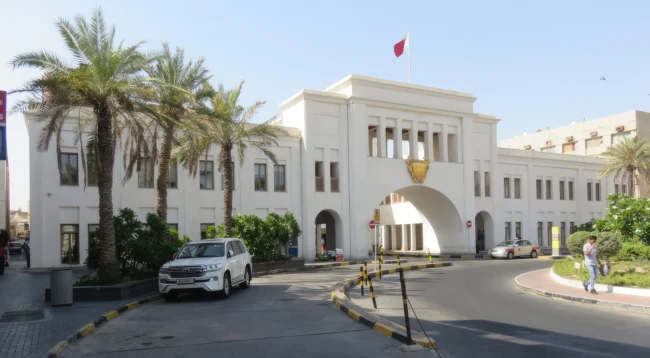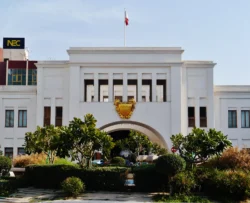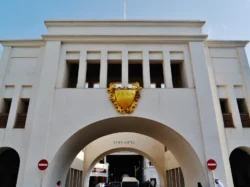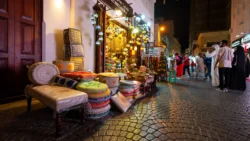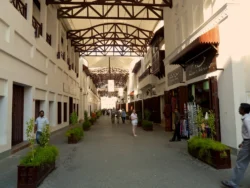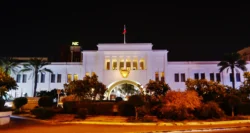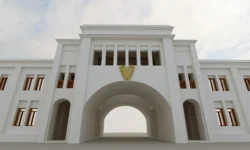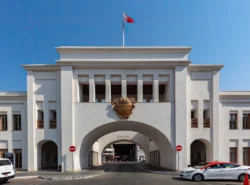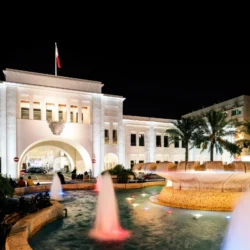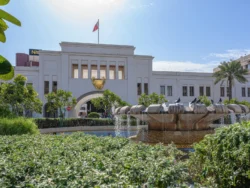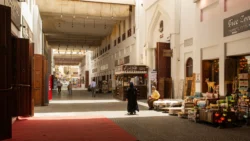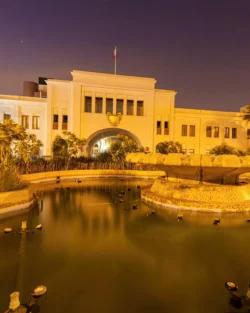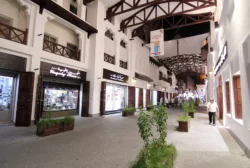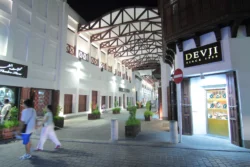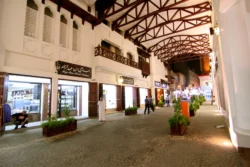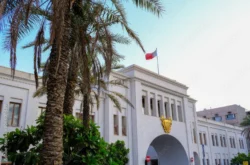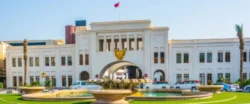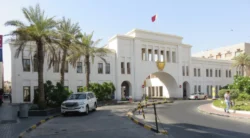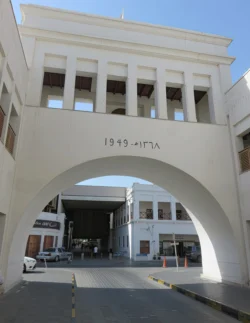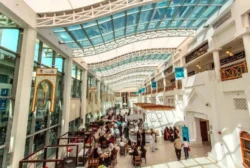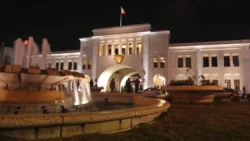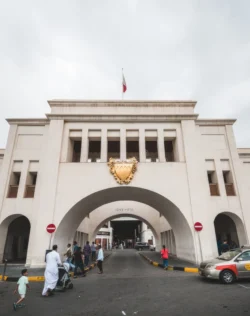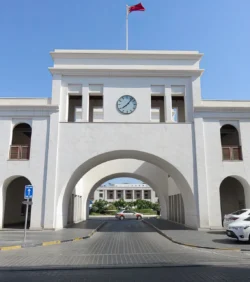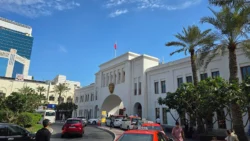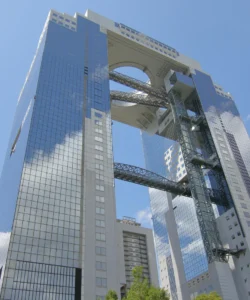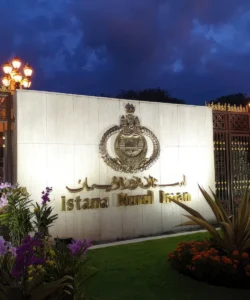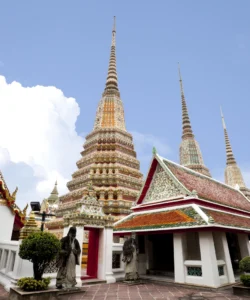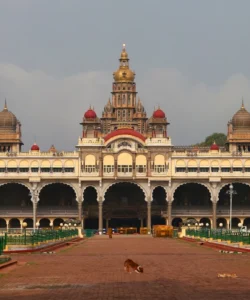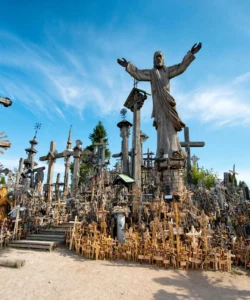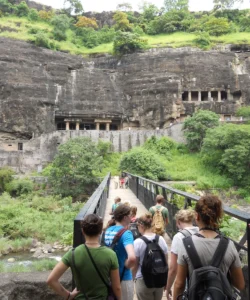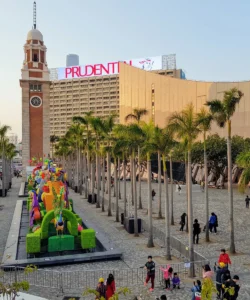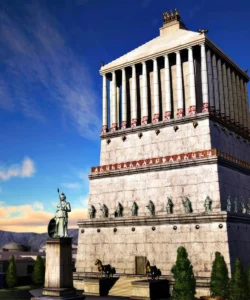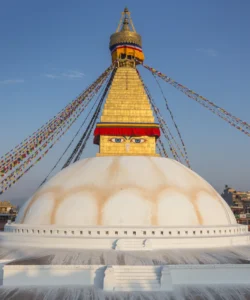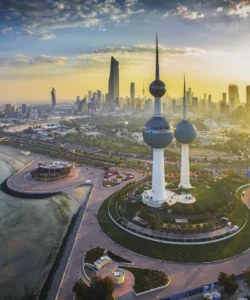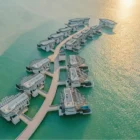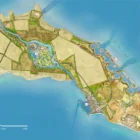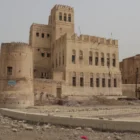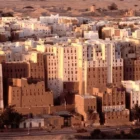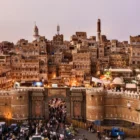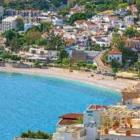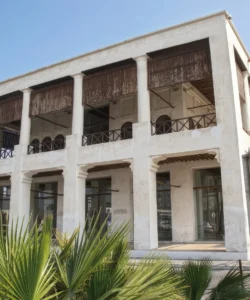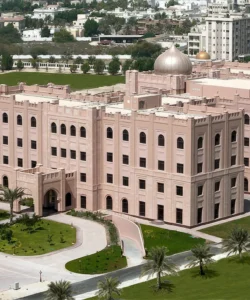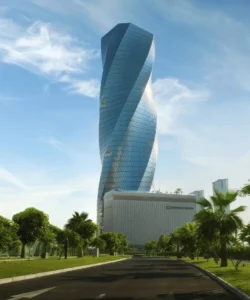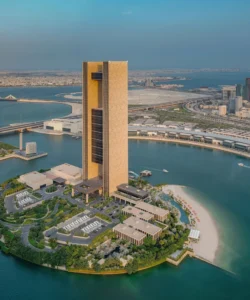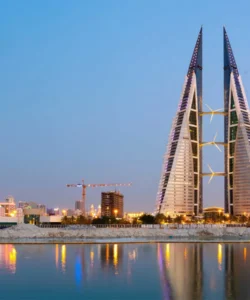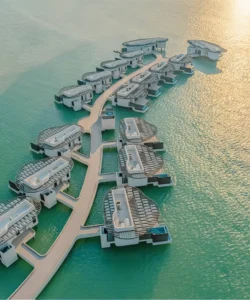Bab Al Bahrain, meaning “Gateway of Bahrain,” is a historic building located in the central business district of Manama, Bahrain. It serves as the iconic entrance to the bustling Manama Souq and is a significant symbol of Bahrain’s rich history, culture, and commercial heritage.
Listen to an introduction about Bab Al Bahrain
Name and Address
- Name: Bab Al Bahrain (Arabic: باب البحرين, meaning “Gateway of Bahrain”)
- Address: Customs Square, Government Avenue, Manama, Bahrain.
- Location: Situated in the heart of Manama, it once stood directly on the coastline but is now several kilometers inland due to extensive land reclamation.
How to Get There
Bab Al Bahrain’s central location makes it highly accessible from various parts of Manama and beyond.
- By Car/Taxi/Rideshare: This is a very convenient way to reach Bab Al Bahrain. It’s a short drive from most areas of Manama.
- Public Transportation: Several bus routes (e.g., A1, A2, 12, 19, 41, 45, X2, X3) have stops directly at or very near Bab Al Bahrain (e.g., “Bab Albahrain” or “Government Avenue-1/Bab Al Bahrain”). This is an economical option, with bus services from Manama Airport also available.
- On Foot: If you are staying in central Manama, it’s easily reachable by foot, especially from the Manama Bus Terminal (approx. 5-10 minute walk).
- Visitor Access: Bab Al Bahrain is open to the public. The ground floor houses a tourist information office and a handicrafts shop. The surrounding Manama Souq is a vibrant marketplace that visitors can freely explore.
Landscape and Architecture
Originally designed by Sir Charles Belgrave, the British advisor to the Emir, and completed in 1949, Bab Al Bahrain has undergone refurbishments to incorporate Islamic architectural features.
- Iconic Gateway: The structure is essentially a large archway through which a road passes, flanked by two smaller pedestrian archways.
- Architectural Blend: Its design represents a blend of traditional Islamic architecture (evident in its intricate carvings, geometric patterns, and later refurbishments) and early 20th-century Western influences.
- Historical Context: When built, it served as the main entrance to the city from the sea, welcoming traders and visitors. The subsequent land reclamation projects have transformed its physical relationship with the coastline, making it a testament to Bahrain’s evolving landscape.
- Functional Hub: Beyond its symbolic role, the building currently houses the Ministry of Culture’s tourism sector office and a visitor’s center, providing information and resources for tourists. It also contains a handicrafts shop.
- Surrounding Area: Behind Bab Al Bahrain lies the sprawling Manama Souq, a labyrinth of narrow streets filled with shops selling everything from textiles, spices, and perfumes to gold jewelry, handicrafts, and souvenirs. The area also features traditional coffee shops and eateries.
What Makes It Famous
Bab Al Bahrain’s fame is rooted in its historical significance, its role as a commercial gateway, and its cultural vibrancy:
- Gateway to the Souq: It is most famous as the grand entrance to the historic Manama Souq, a bustling traditional marketplace that offers an authentic glimpse into Bahraini commerce and culture.
- Historical Landmark: Built in 1949, it was once the primary entry point to Manama from the sea and housed government administrative offices, making it a key historical site.
- Symbol of Identity: It symbolizes Bahrain’s rich heritage and its evolution from a pearling and trading hub to a modern nation, blending tradition with progress.
- Cultural Hub: The area around Bab Al Bahrain and the souq is a vibrant cultural center, hosting various festivals, exhibitions, and performances throughout the year.
- Photogenic Site: Its distinctive architecture and the lively atmosphere of the souq make it a popular spot for photography.
Differences from Some Other Landmarks
Bab Al Bahrain distinguishes itself from other regional landmarks in several ways:
- Gateway to Commerce and Culture: Unlike grand mosques (like Al Fateh Grand Mosque, focused on worship) or modern skyscrapers (like Al Hamra Tower, focused on business), Bab Al Bahrain’s primary identity is as a gateway to a traditional marketplace, emphasizing commerce, daily life, and cultural exchange.
- Historical Evolution: While Bahrain Fort showcases ancient archaeological layers, Bab Al Bahrain represents a more recent historical period (mid-20th century) and its transformation due to urban development and land reclamation, offering a unique narrative of change.
- Public, Interactive Space: Unlike restricted governmental palaces (like Seif Palace), Bab Al Bahrain is an open, public space designed for interaction, shopping, and experiencing local life.
- Blend of Old and New: It uniquely represents the seamless blend of Bahrain’s past and present, serving as a historical monument that actively functions as a vibrant commercial and cultural hub in contemporary Manama.
Bab Al Bahrain Photos:
